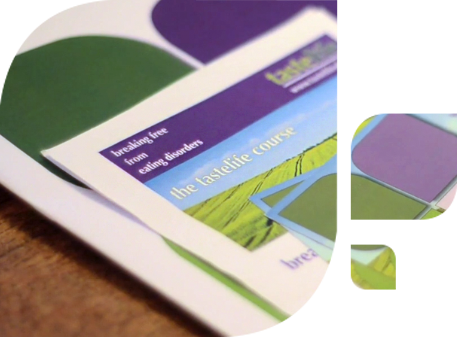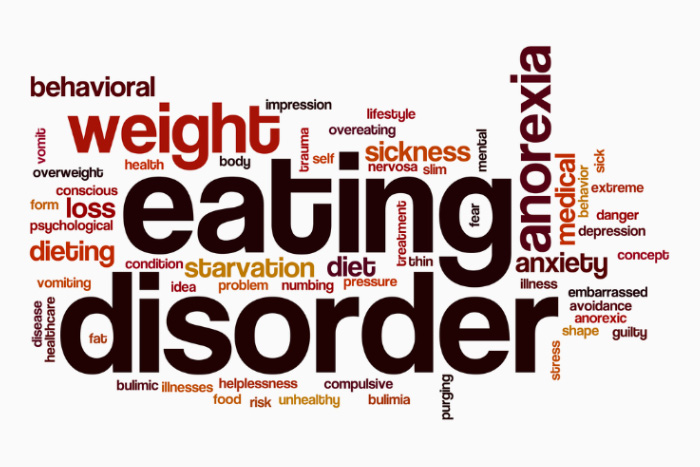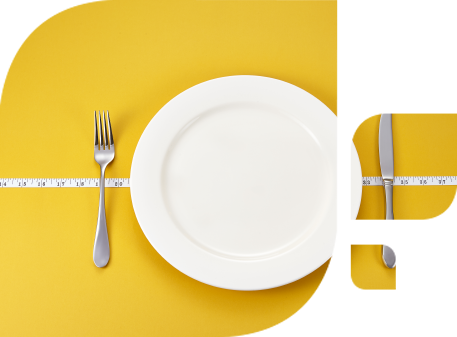About eating disorders
‘I realised I never thanked you for all your help and time. Without tastelife I certainly would not be where I am today. I’m doing great and am happier than I have ever been. I would love to tell you all about it’

People with eating disorders have developed a bizarre relationship with food.
Eating is the stuff of life; it is at the heart of family and social interaction. It is something we all have to do every day to keep healthy in body, mind and spirit. It should be pleasurable and problem free. Sadly, for an ever increasing number of people this is not the case. Even if not suffering from a diagnosed eating disorder, more and more people are uncomfortable about their eating habits.

For many people with full-blown eating disorders, problems start with disordered eating patterns or when they decide to take control of their size and shape because, to their minds, their body image no longer conforms to what they believe to be an accepted norm. Before long, however, their eating or starving, whichever the case may be, begins to take control of them until they become utterly trapped in a cycle which holds them captive. Almost every waking thought involves planning food, counting calories, jumping on and off the scales and thinking of how they look to other people. More and more compulsive and deceptive strategies are devised to hide their eating habits from the world. They are then fully trapped into habits which seem impossible to break; initially what seemed to be a solution has now become the problem.
The three main eating disorders
Anorexia nervosa – excessive control of eating, eating miniscule amounts in rigid patterns, and over-exercising; starving the body, sometimes to death
Bulimia nervosa – eating much food in a ‘binge’ and vomiting it up, or using large amounts of laxatives in the erroneous belief that this will stop food absorption
Compulsive eating, or binge eating disorder – consuming a great deal of food which is typically high in fat and sugar in a secret ‘binge’, often involving special trips to the shops to buy it
OSFED (other specified feeding and eating disorders) – symptoms do not easily fit into one category but are a combination of some of the above
These descriptions are not set in stone. Every sufferer will have a slightly different set of symptoms and may swing between two, or all, of the eating disorders at different times.
All eating disorders have negative implications for health, depending on the severity of the disorder, and the length of time they last. For more detailed descriptions see here.
All eating disorders have one thing in common – a skewed idea about body image. Society constantly feeds us the message that thin means beautiful, thin means successful, thin is healthier. Conversely, fat equals bad in all these respects.
All eating disorders are mental health issues, and all carry dangers for physical health at the same time. Diagnosis of an eating disorder may be confused by other presenting symptoms of depression, obsessive compulsive disorder (OCD), self-harm, and alexithymia (the inability to describe one’s current emotional state).
However, no matter what eating disorder you might be facing, recovery is possible.

Anorexia
People with anorexia have an intense fear of gaining weight. They are often high achieving, but have very low self-esteem and an obsessive belief that being thin will bring security. Therefore, they eat very little, from a small range of food, and often at rigidly fixed times. They are unable to see their bodies as they really are, and despite being very underweight see a fat person staring at them from the mirror (body dysmorphia). They suffer from the cold due to low blood pressure and in extreme cases grow fine hair (lanugo) all over their body. They usually wear lots of baggy clothing, even in hot weather, partly due to cold but also to disguise their body shape. They are medically compromised and females may stop menstruating. Anorexia has the highest morbidity rate (25%) of any mental health problem.
Bulimia
Outwardly confident, but harbouring immense feelings of guilt, people with bulimia are likely to enjoy cooking or working with food. They secretly consume large quantities of food in in one sitting and then use various methods get rid of it as soon as possible. They may vomit after a binge, or even after every meal, but as it is difficult to get rid of all the calories ingested they are not all underweight. Frequent vomiting causes the glands at the sides of the face and under the chin (the ones that cause swelling in mumps) to become swollen and enlarged. They may also suffer from dental problems caused by the acid produced when making themselves sick.
People with bulimia may also take large quantities of laxatives, compromising their digestive systems. You may hear the term ‘non-purging bulimia’ which refers to people who binge and then use excessive exercise to get rid of the calories they have consumed. People with bulimia are also medically compromised as their reproductive organs may be affected, and they may also have yellowing of the whites of the eyes and yellowish skin. Red or scarred areas on the backs of the hands may be a tell tale sign that the person is making themselves sick.
Binge eating disorder
Like the bulimic, a person with binge eating disorder often appears happy and confident. This can hide the life of inner turmoil that accompanies the addictive cravings for sugary/starchy foods or fatty foods like cheese, cream and chocolate. These lead to secret binges or an apparent inability to stop eating. Like an alcoholic who must know where his next drink is coming from, the binge eater has an intense fear of being without food. However, unlike the bulimic, someone with binge eating disorder doesn’t necessarily engage in ‘compensatory’ behaviour (although there may be some abuse of laxatives). There is often a history of yo-yo dieting, each time regaining the weight lost previously. All the dangers faced by overweight people leaves the sufferer hating themselves for being unable to maintain weight loss or live a normal life.
Are eating disorders really all about food?
While it certainly feels as if eating disorders are all about food, both to the sufferer, and those around them, it is most likely that the eating behaviour began as a solution to other life challenges. Eating disorders develop gradually as a defensive, coping response to difficult things in life. There is often a trigger that means people turn to food management to cope – eg social pressure to be thin, a negative comment about shape, the dieting ‘high’.
We all have coping techniques that are difficult to stop, and it is on this sort of spectrum that eating disorders appear. Facing up to these underlying issues is a brave thing to do, and one which deserves full support, love and encouragement from others.


